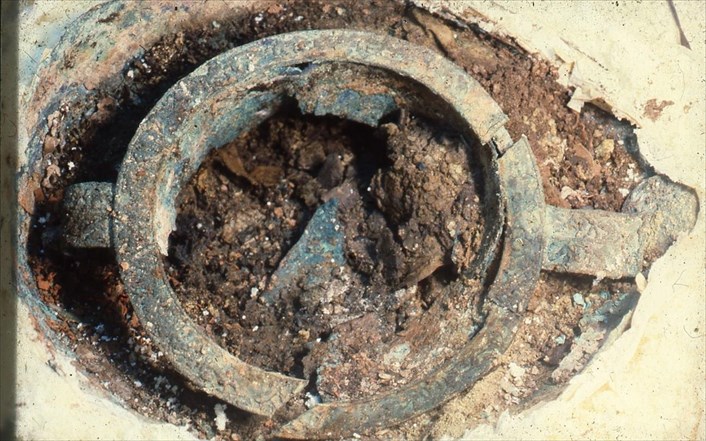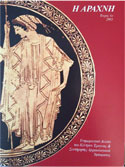PROJECT LEFKANDI

The perennial excavations of the British School of Athens and the Archaeological Service in Lefkandi, Euboea, revealed a rich settlement with intensive commercial activity of the Sub-Mycenaean years with continuity of occupation during the Early Iron Age, and cemeteries dated from the 11th to the 9th centuries. B.C. In the richest of them, in the Touba location, a monumental arched building from the middle of the 10th century. B.C. has been located under an artificial tumulus. The spectacular building became the eternal residence of a man with a prominent place in the society of the time, the so-called "hero of Lefkandi." Next to him was buried a woman, perhaps his companion, and in a nearby pit, his four horses, a burial habit of the Homeric years. His ash was preserved in a bronze Cypriot funerary urn, precious heirloom for at least one century. Inside was placed a large rectangular linen cloth carefully folded, which was preserved in excellent condition thanks to the protective properties of copper. It was a tabby, and a large part of it was covered with fringes. Separate cloth bands, decorated with geometric patterns, completed the textile find.
Immediately after his discovery and first aid at the excavation, in the spring of 1981, the find was transferred to the National Archaeological Museum where he was conserved by a group of conservators headed by the late Tassos Margaritov and mounted on a modern cloth substrate. Since then it has been kept in a specially designed case under appropriate climatic conditions, but has not yet been exposed to the public.
Recently, the Local Council of Monuments of Attica has given the permission for the study and publication of the fabric in a five-member scientific group consisting of: a) Prof. I. Lemos (British School of Athens - University of Oxford), b) Dr. S. Spantidaki (ARTEX Hellenic Centre for Research and Conservation of Archaeological Textiles), c) Dr. C. Margariti (Directorate of Conservation of Ancient and Modern Monuments), d. Dr. P. Kalamara (Ephorate of Antiquities of Euboea) and e) Dr. G. Moraiti (National Archaeological Museum).
Already from the early stages of the study, important elements are revealed, concerning both technical details of the fabric, as well as the actual number of textiles that constitute this find, which is larger than expected.
This interdisciplinary study (in collaboration with researchers and Universities in Greece and abroad) is expected to provide answers about the production and decoration of the textiles with colours and designs, as well as its use and connection with the eminent man from Lefkandi, who was buried with honours three thousand years ago. This study is particularly important since it concerns one of the oldest and best-preserved fabrics in Greece.
The ultimate aim of the project is the re-conservation of the textiles with current technical methods, its scientific publication and its long-awaited exhibition together with the bronze urn, which contained it, in the museum to which it belongs, the Archaeological Museum of Chalkida.
For information about the progress of the study, visit #project_lefkandi.


